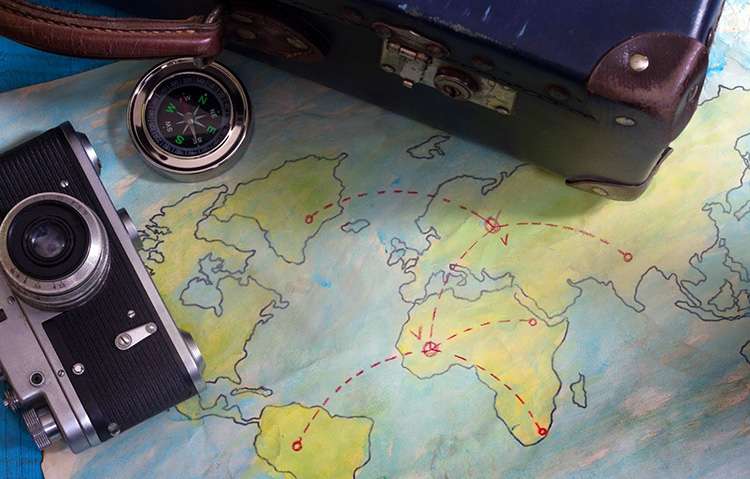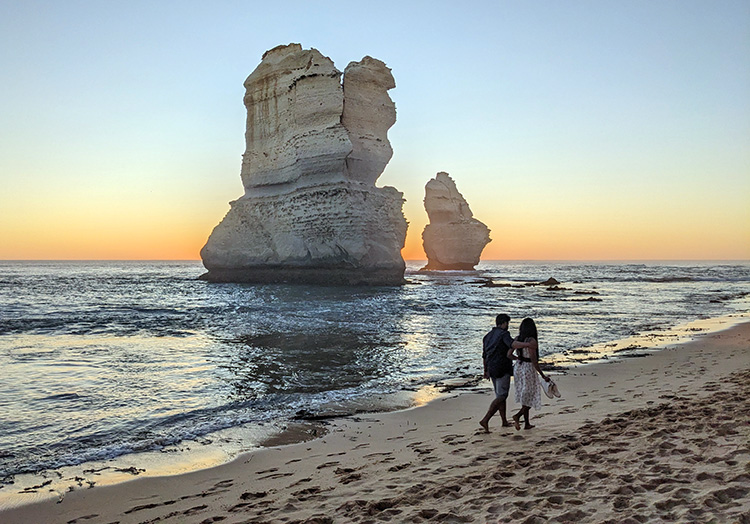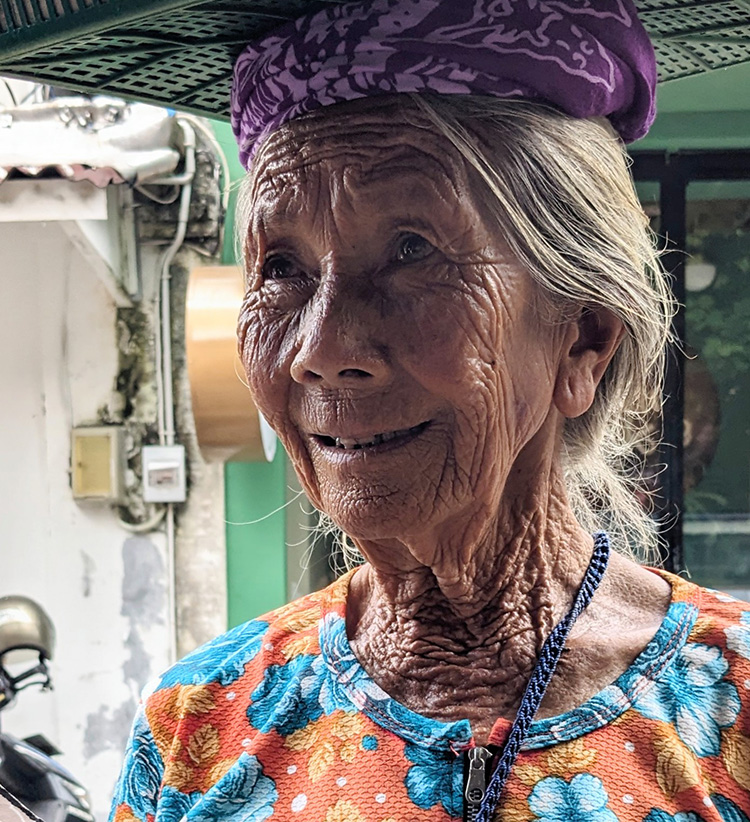Essential Tips for Beginner Travel Photographers
[ Back to Photography Index ]
Travel photography is an exhilarating way to capture the essence of your adventures and share the world through your eyes. Whether you're admiring vast landscapes, bustling city streets, or unique cultural moments, having the right techniques and settings can make all the difference. This guide is here to help beginners step into the world of capturing professional travel stock photos with ease. We'll explore essential camera settings and tips that will transform your snapshots into stunning keepsakes. Let’s dive into turning those travel moments into lasting memories with brilliance and clarity.
 pack your camera
pack your cameraUnderstanding Your Camera
The journey to becoming a proficient travel photographer begins with a deep understanding of your camera. Whether you've invested in a high-end DSLR, a mirrorless camera, or are making the most of your smartphone, grasping the capabilities and limitations of your equipment is paramount. This initial step lays the foundation for capturing those breathtaking moments you'll encounter on your travels.
Choosing the Right Equipment
Selecting the right camera and accessories can seem daunting to a beginner. Start by considering what type of travel photography excites you the most. Are you captivated by landscapes, intrigued by local cultures, or maybe drawn to wildlife? Your focus will determine the kind of camera and lens you might need. A good starting point is a versatile camera that is lightweight and easy to carry, as this will be your companion on various adventures. Don’t forget to invest in a durable camera bag to protect your gear!
Mastering the Basics of Your Camera
Once you've chosen your camera, dedicate time to understanding its basic functions. Experiment with different shooting modes—like manual, aperture priority, and shutter priority—to see how they affect your images. Learn what ISO settings work best in various lighting conditions, and practice adjusting the white balance to ensure colors are as true to life as possible. This stage of exploration is crucial; comfortable familiarity with your camera’s settings will allow you to focus more on capturing the shot when the moment arrives.
Composition Techniques
Mastering composition is what transforms a simple snapshot into a striking photograph. Composition refers to how elements are arranged in your photo. Here are some foundational techniques to enhance the visual appeal of your images.
Rule of Thirds
Imagine your image divided by two horizontal and two vertical lines, creating nine equal segments. The rule of thirds suggests placing the main subject along these lines or at their intersections. This technique naturally draws the viewer’s eye into the composition and often results in a more balanced, engaging photo.
Leading Lines
Use natural or man-made lines in your scene to lead the viewer’s eye towards the main subject. These could be roads, pathways, fences, or even shadows. Leading lines create a sense of depth and perspective, making the photograph more dynamic and interesting.
Framing
Framing involves using elements within the scene to enclose the subject in some way, which can help to focus attention on the main subject. This could be achieved through a doorway, an archway, or even branches of a tree. Framing adds depth to the photo and can also convey a sense of place or context.
 Light plays a crucial role in photography
Light plays a crucial role in photographyLighting Tips
Light plays a crucial role in photography, and mastering it can significantly enhance your travel photos. Here are some key lighting tips to remember:
Golden Hour Photography
The golden hour, which occurs shortly after sunrise or before sunset, is a magical time for photographers. The soft, warm light during these times casts beautiful hues and long shadows, adding depth and texture to your images. To make the most of the golden hour, plan your photography sessions around these times. The soft light minimizes harsh shadows and highlights, allowing you to capture the true beauty of your destination.
Handling Harsh Lighting Conditions
Midday sun can create harsh lighting conditions that are challenging for photographers. However, you can still take great photos with a few adjustments. Try to use shadows to your advantage, creating interesting patterns and contrasts. When shooting landscapes, a polarizing filter can help reduce glare and enhance the sky's color, making your photos pop. Also, increasing the shutter speed can help manage the excess light and prevent overexposed photos.
Using Natural Light to Your Advantage
Understanding and utilizing natural light can dramatically improve your travel photos. Whenever possible, use natural light instead of flash, as it offers a softer and more natural look. Experiment with different angles and positions to see how the light affects your subject. Sometimes, even a slight move can dramatically change the mood and quality of your image. Remember, the best travel photos feel as real and authentic as the places they capture.
Planning Your Shots
Taking memorable travel photos requires a bit of planning. Here's how to prepare effectively:
Researching Your Destination
Before you arrive, spend some time researching your destination. Look for iconic landmarks, hidden gems, and unique cultural events that could serve as interesting subjects for your photographs. Understanding the local culture and history can also provide you with insight into the best times and locations for capturing compelling images. Social media platforms and travel blogs can be excellent resources for finding inspiration and tips from other travelers and photographers.
Preparing for Various Scenarios
Travel photography often involves dealing with the unexpected, so it's essential to be prepared for various scenarios. Pack your camera bag with versatile lenses to capture a wide range of subjects, from sweeping landscapes to detailed portraits. Bring extra batteries and memory cards to avoid missing out on once-in-a-lifetime shots. Additionally, familiarize yourself with your camera's settings so you can quickly adjust to changing conditions, whether you're dealing with a sudden rainstorm or an impromptu street performance. Being prepared means you’re always ready to capture the moment, no matter what comes your way.
Editing Your Photos
Introduction to Editing Software
Stepping into the world of photography editing might seem daunting at first, but it’s a game-changer for enhancing the beauty of your travel photos. Begin with user-friendly software like Adobe Lightroom or Photoshop, which offers a plethora of tutorials for beginners. These platforms allow you to adjust exposure, color balance, and even remove unwanted objects, turning a good photo into a great one.
Enhancing Colors and Contrast
One of the first steps in editing your photos should be to tweak the colors and contrast to make your images pop. Adjusting the saturation can bring out the vibrancy of your travel landscapes, while playing with the contrast can add depth and dimension. Remember, subtlety is key; over-editing can make your photos look unnatural.
Cropping and Straightening Images
Sometimes, a great photo lies within your good photo. Cropping can help you remove distractions from the edges, or change the photo’s composition to make your subject stand out more. Straightening, on the other hand, is crucial for ensuring horizons in your landscapes are perfectly level. These simple edits can significantly improve the overall appearance of your shots.
 create a blurred background, which draws attention to the person
create a blurred background, which draws attention to the personTips for Engaging Travel Subjects
Portraits
When capturing portraits during your travels, focus on the eyes and try to convey the personality of your subject. Use a wide aperture to create a blurred background, which draws attention to the person. Also, be mindful of the lighting; natural light often provides the most flattering and compelling results.
Candid Shots
Candid photography captures the essence of the moment, telling a story more naturally than posed shots. Keep your camera ready, anticipate moments before they happen, and shoot from various angles. Remember, the best candid shots are those where the subject is unaware of the camera.
Connecting with Locals
Building a rapport with locals can lead to more meaningful photographs. Learn a few phrases in the local language, show genuine interest, and always ask for permission before taking someone’s picture. Respect for local customs and cultures not only gains you access but also enrichens your travel experience.
Tell a Story Through Your Photos
Finally, aim to tell a story with your travel photography. Use a series of photos to showcase the journey, the landscape, and the people. Each image should add a layer to your narrative, making viewers feel as if they were there with you. Remember, great travel photography is not just about capturing beautiful scenes; it’s about conveying emotions and stories that resonate with others.
Overcoming Common Challenges
Travel photography brings its own set of challenges, but with a few tricks up your sleeve, you can navigate through them smoothly.
Dealing with Crowds
Capturing that perfect shot in a busy tourist spot can be tricky. Try visiting popular locations early in the morning or during off-peak hours to beat the crowd. Alternatively, use crowds to your advantage by incorporating them into your photos to capture the essence and energy of the place.
Adapting to Weather Changes
Weather can be unpredictable, but it doesn't have to ruin your photography plans. Always check the weather forecast and be prepared with necessary gear like rain covers for your camera. Also, learning to adapt to changing conditions can result in some unexpectedly stunning shots. For example, overcast days can offer diffused light that is perfect for portraits.
Maintaining Gear on the Go
Keeping your photography gear in top condition while traveling is essential. Always carry a basic cleaning kit with you to deal with dust and smudges. Invest in a sturdy, waterproof camera bag to protect your equipment from the elements. And most importantly, always have extra batteries and memory cards handy to ensure you never miss a shot.
Conclusion
In wrapping up, diving into travel photography as a beginner is an exciting journey filled with learning and creative exploration. Remember, the key to capturing those breathtaking images lies in practicing your craft, understanding your equipment, and exploring the world around you with fresh eyes. Don't be afraid to experiment with camera settings, seek inspiration from professional travel stock photos, and most importantly, enjoy the process of creating beautiful memories. Keep these tips in mind, and you'll be on your way to crafting stunning images that tell the vibrant stories of your travels. Happy shooting!
Do you have feedback, a comment or correction? Let us know
